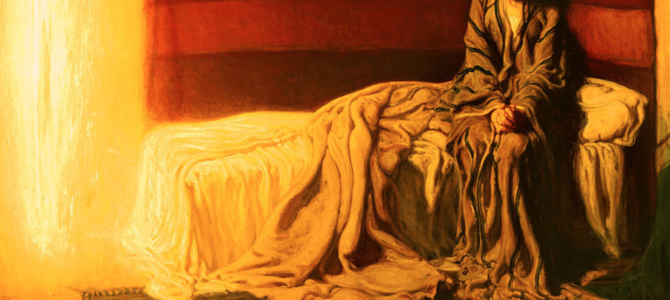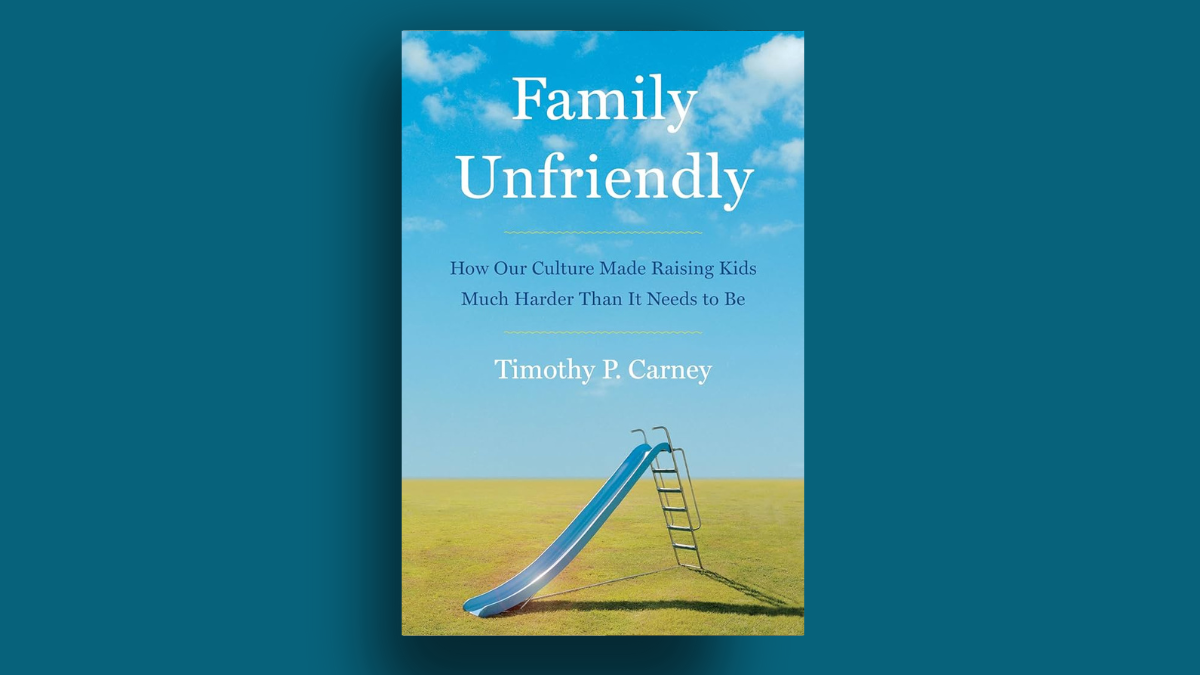
If quizzed “Who was the first person to welcome Jesus and announce his lordship?” how would you answer? It’s an important question when we consider that this man from the nowhere town of Nazareth is the most consequential individual ever.
His teaching and followers across the globe radically transformed world culture, toppled great powers without ever firing a shot, established the world of humanitarianism and accessible medical care for commoners, inspired the scientific method, and enlivened the world movements for justice, human dignity, and individual freedom. He literally divides history and is responsible for the founding of the largest, most diverse collection of people around some basic ideals.
This all started with two women no one had ever heard of, whose life-altering experiences are now illustrated in two exquisite works of art. Mary, a humble, young virgin, by tradition about 14 years old at the time, is told by an angel she will give birth to the very Son of God. At this striking news, she “arose and went with haste” to see her cherished relative, Elizabeth, some 90 miles away.
Elizabeth was in the sixth month of her own miraculous pregnancy, for she was well past child-bearing years. Of course, her baby was Jesus’ cousin, John the Baptist.
The beauty of this part of the Christmas story is the miracle that happens the moment Mary enters Elizabeth’s home. Christ is recognized, received, proclaimed, and worshiped, and Mary and Elizabeth are not the only two involved in the divine drama here. We read in Luke 1:41-44:
And when Elizabeth heard the greeting of Mary, the baby leaped in her womb. And Elizabeth was filled with the Holy Spirit, and she exclaimed with a loud cry, “Blessed are you among women, and blessed is the fruit of your womb! And why is this granted to me that the mother of my Lord should come to me? For behold, when the sound of your greeting came to my ears, the baby in my womb leaped for joy.
This is a major event in Jesus’ story and thus the Christian church, but we seldom appreciate it as such. It is the first time Jesus is both proclaimed and worshiped as God! This was done, we are told, “in a loud voice.” And Christ the Lord is worshiped by two people at the same time — one very old, one super young.
The First to Proclaim Jesus’ Lordship
Elizabeth proclaims the blessedness of Jesus and his mother. The simple but world-changing confession, “Jesus is Lord,” was the first and most basic way Christians began to proclaim their faith and greet one another in the church’s early years. It was the first Christian creed, and Elizabeth was the first to proclaim it, long before Christmas morning. Think on that for a moment.
The second greeting is even more incredible and speaks to an intimate relationship in the Savior’s life. Baby John leaps for joy, literally, at the coming of the Savior. He does so as a child in the darkness of his mother’s womb. (Yes, Christianity has profoundly strong words for the humanity and dignity of the unborn child in John and Jesus’ remarkable in utero contribution to the good news.)
John did not start serving as the forerunner of Christ when preaching about his coming in the desert. It was here, in the womb. And it was two very common mothers, Elizabeth and Mary, who experienced this remarkable, history-changing event. It happened in distinctly womanly interiors of their hearts and wombs, and in the humbleness of Elizabeth’s home. Humble motherhood and the intimate bond only mothers can share is the human font of the Christian story.
To be sure, the Christian church, which is often incorrectly charged with being sexist by people who know little of its actual story, is founded upon two women being the first to welcome and praise the Savior. (Remember as well, it was a small group of women who announced the “second birth” of the Savior, if you will, at his resurrection.) What other major faith or philosophy has women playing such a significant role in its founding? I cannot think of one.
Two famous paintings communicate the beauty of these wondrous events, “The Annunciation” and “The Visitation.” The first African-American painter to achieve significant critical acclaim, Henry Ossawa Tanner, created both. He is a remarkable man and one of my favorite artists.

‘The Annunciation’
One of the things I like best in Tanner’s two works here is that he shows us the simple humanness of Mary and Elizabeth. They are not supernatural, other-worldly, saintly subjects in the typical sense. Tanner’s images show us the regular, everyday women they were.

He will not allow us to miss the youth, innocence, and commonness of our Mary. Tanner doesn’t give her a facial expression communicating anything obvious. Is she scared? Stunned? Joyful? Solemn? His Mary is more complex than many artists’ as is undoubtably true of the actual event. Tanner has her communicating all these feelings and struggles at once.
When the angel Gabriel appeared to Mary with this most startling news, he found a teenage girl living a typical teenage girl’s life. The greatest royal announcement in the history of the universe takes place in this teen girl’s humble bedroom, illuminated by the majesty of God’s oracle. That is precisely what Tanner gives us, and it’s just stunning. Also, his technique in presenting the folds and flow of her gown and bed coverings is nothing short of magnificent.
‘The Visitation’
As wonderful as Tanner’s “Annunciation” is, his “Visitation” is even more striking.
Just look at it and consider what’s happening here.
When Elizabeth heard the greeting of Mary, the baby leapt in her womb. And Elizabeth was filled with the Holy Spirit.

Tanner allows us personally to witness this event. Elizabeth most likely did not have any notice that Mary was coming or the grand news that prompted the visit. She sits at the table on an ordinary day, when she hears Mary possibly utter what any of us likely would as she comes to the door, “Liz, you home?”
Elizabeth’s divine surprise and wonder is dramatically communicated simply in her uplifted hands. It’s a glorious device. Are they hands of praise or surprise? Certainly both at the same time.
This simple scene of a surprise family visitation and domesticity is the first scene of Jesus being worshiped. Reflect on this a moment. The event we are witnessing right here in this kitchen is the initiation of what the rest of history and eternity will be about, the worship of the second person of the divine Trinity: Jesus, the Father’s beloved Son.
The interchange between these two women in this domestic setting is unspeakably profound. We typically move over it far too easily, wanting to get onto what we see as the center of the Christmas story, the manger.
This exchange is also vitally important because it is the first revelation of Christ beyond Mary’s heart and womb. It is the precise second and scene that commenced the worship of the Son of the God that will continue without end into eternity, the story that encapsulates a Christian’s whole reality.
P.S. Tanner Lived in Philadelphia
I knew Tanner lived in Philadelphia for some time, so on a business trip there some years ago, I wanted to see if his house was discoverable. It was, and I found it, right around the corner from John Coltrane’s home. How cool is that?











